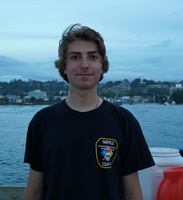Behind the science:
A novel fish sampling system for ROVs
2020, December 11
Posted by Veronica Radice
Fields
Methods and Technology
Focusgroups
Fishes
Locations
Solomon Islands
Platforms
Remotely Operated Vehicle (ROV)
“ROV based fish sampling technology”
What was the most challenging aspect of your study (can be anything from field, lab to analysis)?
The work we did in the field on the A.R. Ford was probably the more challenging aspect of the study in my perspective. It was an interesting transition from initially engineering the sampling system in the lab to actually using it in the field. Much of my downtime in between ROV dives was spent tinkering with my design trying to make it work better. It was frustrating to see parts of it fail, yet extremely satisfying to be able to put in more work and have it succeed.
What was the most memorable moment in undertaking this study?
Probably the most memorable moment of the entire trip was when we brought up our first successful capture. It was one of our first ROV dives off the coast of this beautiful deserted island, Mborokua, and one of our first sampling dives in general. We were all very curious to how effective the system actually would be and my hopes were very high. After finding a perfect reef site and sampling as well as we could it didn’t seem, from our couple camera views topside, that we had caught anything. Once we had recovered the ROV I was a bit disappointed to not have anything to show for the dive, but upon closer inspection of the capture chamber we found several of these small fish caught in the mesh separating the sections of the chamber. On bringing them out I think my disappointment got away from me a bit as I go, “Oh boy, just a bunch of guppies!”. Needless to say, the biologists on the trip were very happy and corrected me with a laugh that these weren’t guppies at all and there was a good chance they were new species. It definitely showed how much I had to learn and from that moment on I’ve been fascinated by mesophotic ecosystems.
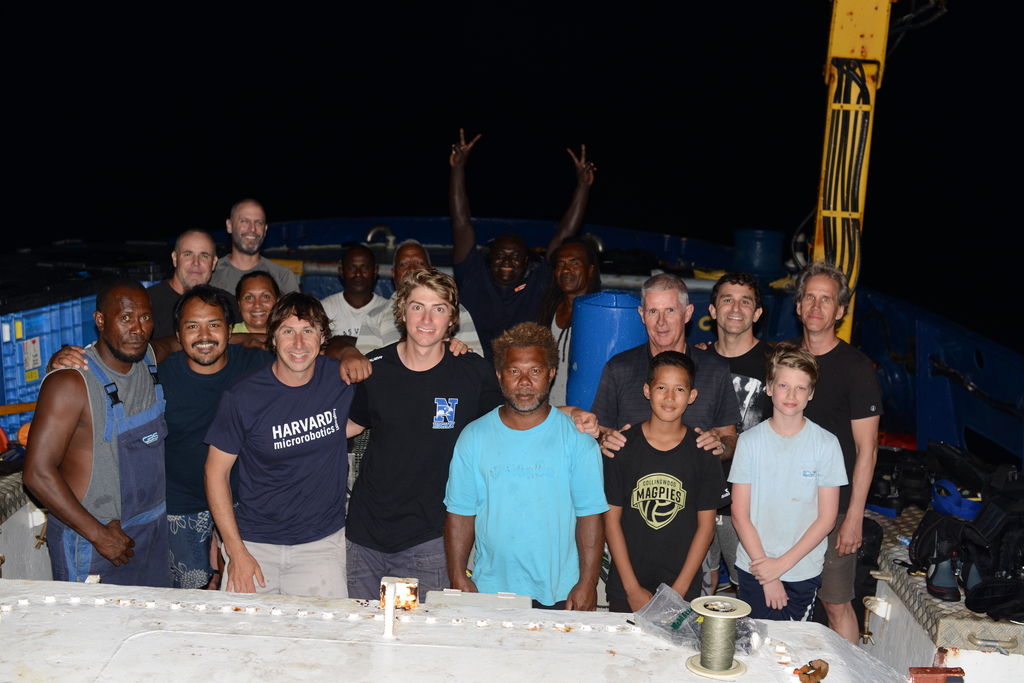 Group shot of everyone involved with the expedition. Left to Right: Back: Bob Schelly, John, Robbie Middle: Corey Howell, Waelinah Howell, Monroe Front: Saga, Rendhy Sapiie, Brennan Phillips, Nick Chaloux, Danny, John van der Lem, John van der Lem Jr., David Gruber, Tate Sparks, John Sparks
(C) J. Sparks
[CC BY-NC 4.0]
Group shot of everyone involved with the expedition. Left to Right: Back: Bob Schelly, John, Robbie Middle: Corey Howell, Waelinah Howell, Monroe Front: Saga, Rendhy Sapiie, Brennan Phillips, Nick Chaloux, Danny, John van der Lem, John van der Lem Jr., David Gruber, Tate Sparks, John Sparks
(C) J. Sparks
[CC BY-NC 4.0]
What was your favorite research site in this study and why?
It was a privilege to be able to travel and study some of the mesophotic reefs off of the village of Peava. Some of my group had been to the village before and I was very excited to see it for myself. Corey Howell was our local contact and him and his family were our liaisons to the rest of the village. On a few occasions our science party got to interact with everyone and it was an incredible experience to get a glimpse of their life style.
Other than your co-authors, with whom would you like to share credit for this work?
One of the pictures included above is an awesome group shot of the whole team during one of the last nights in Peava. The crew of the A.R. Ford were essential in all the work we did on the expedition and the deployment of the ROV system wouldn’t have been possible without them.
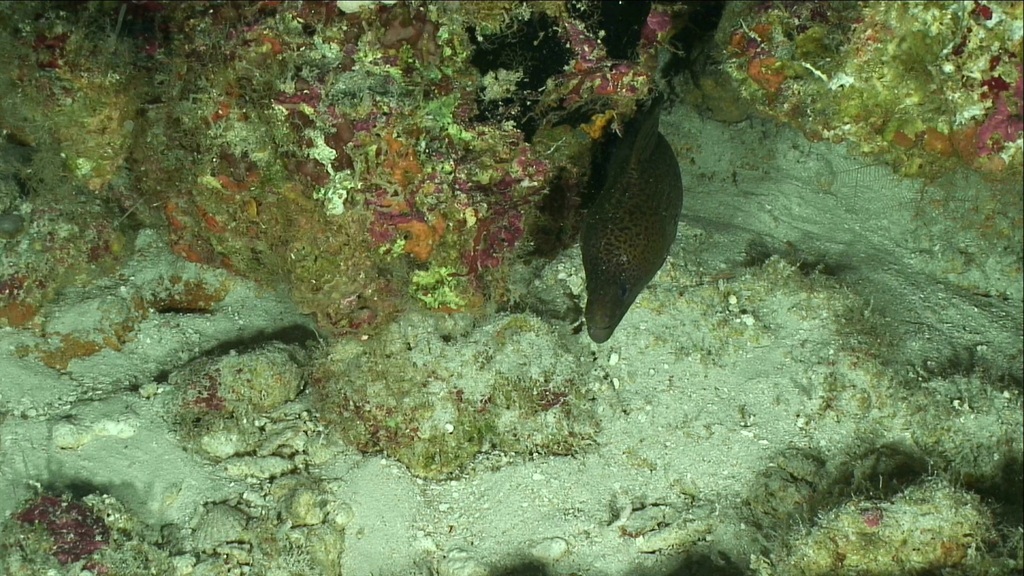 A curious moray eel we stopped to observe while on a sampling dive at Mataki Reef.
(C) B. Phillips
[CC BY-NC 4.0]
A curious moray eel we stopped to observe while on a sampling dive at Mataki Reef.
(C) B. Phillips
[CC BY-NC 4.0]
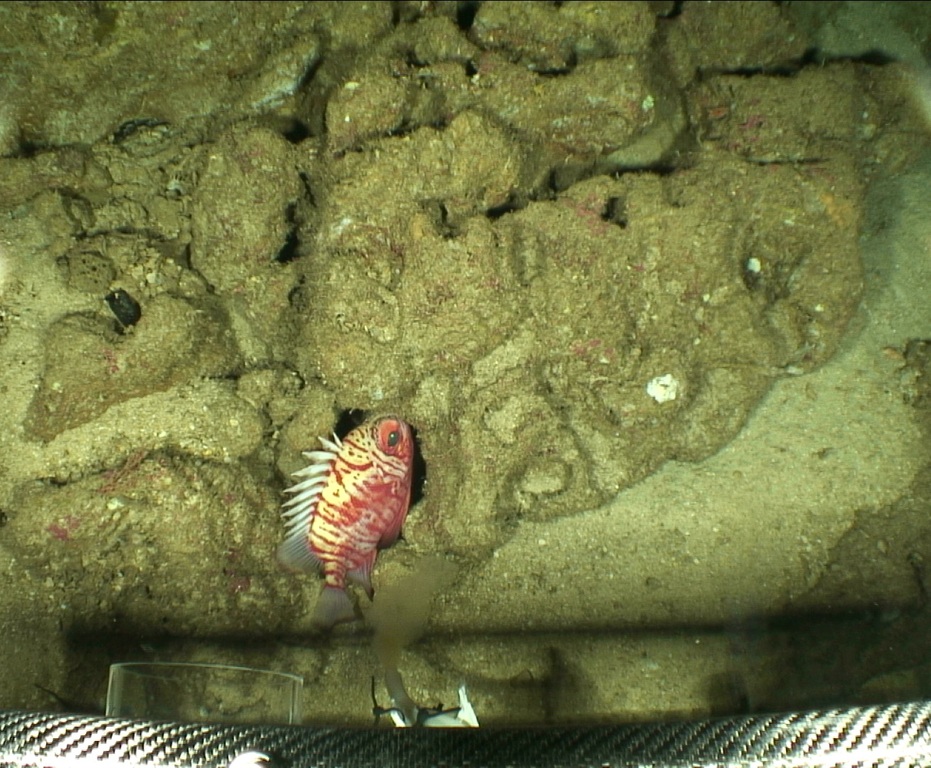 On our last sampling dive in Peava we got totally distracted with this beautiful specimen. Our stomachs were much larger than our mouths and all attempts to capture her failed. I thought it fitting to name her Petunia. The one that got away.
(C) B. Phillips
[CC BY-NC 4.0]
On our last sampling dive in Peava we got totally distracted with this beautiful specimen. Our stomachs were much larger than our mouths and all attempts to capture her failed. I thought it fitting to name her Petunia. The one that got away.
(C) B. Phillips
[CC BY-NC 4.0]
Any important lessons learned (through mistakes, experience or methodological advances)?
I absolutely learned many lessons during this expedition. One of the most important was the fact that you can prepare as much as you can in the lab, but in the field almost everything can still go wrong. You have to be prepared for almost everything to fail and make sure in the field you have the ability to fix everything. I was very lucky to have an amazing team to support me when those failures did happen. In the Solomons we had to be very self sufficient and when things did go wrong, at times we scrambled a bit, but eventually we did make everything work.
Can we expect any follow-up on this work?
Yes! I’m very excited to start collaborating with other scientists in other parts of the world to expand our knowledge of these unique ecosystems. I think we’ve learned a lot from this first trip and future iterations of the sampling system will be more effective and less intrusive.
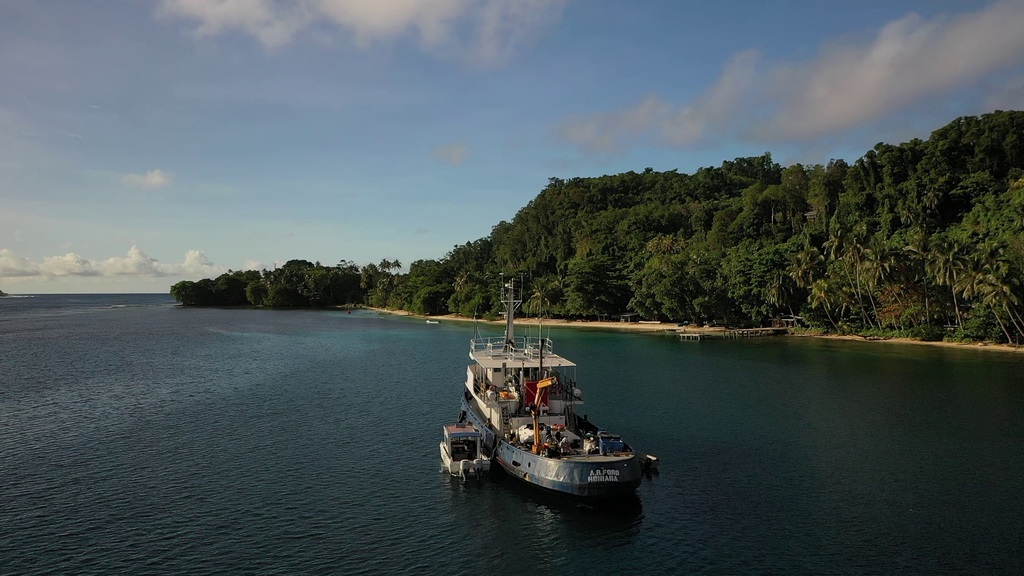 One of the many beautiful drone shots of Peava village. The A.R. Ford fit just perfectly within the protected lagoon and here you can see Corey Howells boat rafted up before taking others out to SCUBA dive for the day.
(C) N. Chaloux
[CC BY-NC 4.0]
One of the many beautiful drone shots of Peava village. The A.R. Ford fit just perfectly within the protected lagoon and here you can see Corey Howells boat rafted up before taking others out to SCUBA dive for the day.
(C) N. Chaloux
[CC BY-NC 4.0]
Featured article:
|
|
A novel fish sampling system for ROVs | article Chaloux N, Phillips BT, Gruber DF, Schelly RC, Sparks JS (2020) Deep Sea Res Part 1 Oceanogr Res Pap |
|
